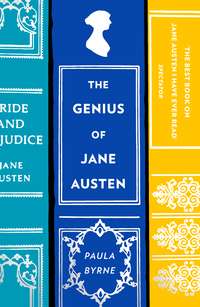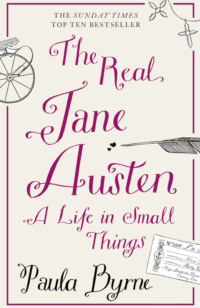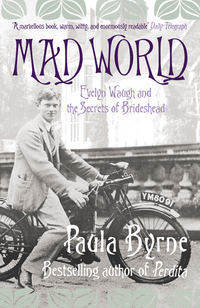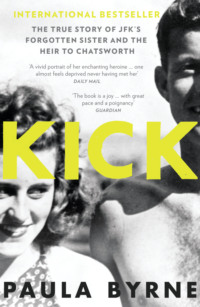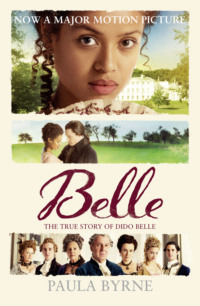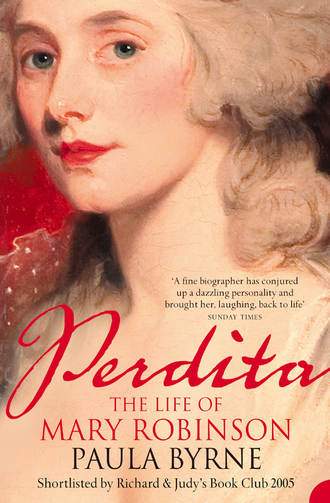
Полная версия
Perdita: The Life of Mary Robinson
Who has not wak’d to list the busy sounds
Of summer’s morning, in the sultry smoke
Of noisy London? On the pavement hot
The sooty chimney-boy, with dingy face
And tatter’d covering, shrilly bawls his trade,
Rousing the sleepy housemaid. At the door
The milk-pail rattles, and the tinkling bell
Proclaims the dustman’s office, while the street
Is lost in clouds impervious. Now begins
The din of hackney-coaches, wagons, carts;
While tinmen’s shops, and noisy trunk-makers,
Knife-grinders, coopers, squeaking cork-cutters,
Fruit-barrows, and the hunger-giving cries
Of vegetable vendors, fill the air.
Now ev’ry shop displays its varied trade,
And the fresh-sprinkled pavement cools the feet
Of early walkers.3
She finds poetry in everything from the dustman to the ‘neat girl, / Tripping with bandbox lightly’ to the street vendor of second-hand clothes.
Mary was to experience London in its entirety, from debtors’ prison to parties given in her honour as the Prince’s consort at St James’s Palace. She became notorious for her self-promotion and her skill in anticipating the next new thing, be that in fashion or poetry. But she also grasped the very essence of urban culture in the late eighteenth century in a way that eluded Wordsworth. She knew that in order to survive and thrive in the new consumer society, she had to work to sell her wares. The literary marketplace was as crowded as the London streets and it took guts, brashness, and ostentation to make your voice heard – especially if you were a woman.
She must have felt some trepidation at meeting Garrick: ‘King’ David, the man who had single-handedly transformed the theatre world, acting on stage with unprecedented naturalism, producing behind the scenes with prodigious energy, and above all conferring on his profession a respectability it had never had before.
The 14-year-old girl was summoned to the actor’s elegant and grand new house in Adelphi Terrace, designed by the fashionable Adam brothers and overlooking the Thames. The Garricks had recently moved there and had furnished it lavishly. Mary would have entered through the large hall, with its imposing pillars, and then been shown into the magnificent first-floor drawing room, with its elaborate plaster ceiling crowned by a central circular panel of Venus surrounded by nine medallion paintings of the Graces. Garrick would have soon put her at ease with his good humour and liveliness. His wife, Eva Maria Veigel, a former dancer, was usually at his side and was especially considerate to young girls, as the future dramatist and novelist Fanny Burney testified when she visited the Garricks at their new house the same year: ‘Mrs Garrick received us with a politeness and sweetness of manners, inseparable from her.’4
Garrick, always susceptible to beauty, was captivated by Mary’s loveliness. Her voice reminded him of Susannah Cibber, an actress and singer he had favoured in his youth. An added attraction came in the form of Mary’s long, shapely legs, ideal for the highly popular ‘breeches roles’ that were required of actresses on the Georgian stage. In an age when women wore full-length dresses all the time, the actress who cross-dressed in boys’ clothing – as Shakespeare’s Rosalind and Viola, and in dozens of similar roles in eighteenth-century comedies – provided a unique spectacle: the public exhibition of the shape of a female leg.
Garrick’s personal interest was in no sense salacious. His faith in this young unknown was typical of his unfailing support for women in the theatre. His patronage of female actresses and female playwrights was highly unusual in a society that discouraged women from the stage and still regarded actresses as little better than prostitutes. Garrick ‘discovered’ many a young actress and gave playwrights such as Hannah More and Hannah Cowley their first break. In return these young women adored him and his wife.
He offered to train Mary for the part of Cordelia to his own King Lear in the version of Shakespeare’s tragedy that he had reworked from Nahum Tate’s Restoration era adaptation, in which Cordelia is happily married off to Edgar instead of being hanged. Garrick was now in his fifties, beginning to suffer from gout and gallstones. He was conserving his energy, limiting the number of his appearances on stage. Lear, which he had been playing since he was 25, was not only one of his most celebrated but also one of his most demanding roles. This late in his career, it was an extraordinary gamble to entrust Cordelia to a complete unknown. He and Mary spent hours preparing for her debut in the role.
But it was not all work: in the Memoirs, she draws a charming picture of them dancing minuets (Garrick was an excellent dancer) and singing the favourite ballads of the day. Her memory remained vivid: ‘Never shall I forget the enchanting hours which I passed in Mr Garrick’s society: he appeared to me as one who possessed more power, both to awe and to attract, than any man I ever met with.’5 She also noticed his dark side: ‘His smile was fascinating; but he had at times a restless peevishness of tone which excessively affected his hearer; at least it affected me so that I never shall forget it.’ His temper was renowned. Fanny Burney reported in her diary that Dr Johnson attributed Garrick’s faults to ‘the fire and hastiness of his temper’. Burney loved Garrick and was mesmerized by the lustre of his ‘brilliant, piercing eyes’, but she also noted that ‘he is almost perpetually giving offence to some of his friends’.6 Others could feel irritated by his attention-seeking behaviour. As his friend Oliver Goldsmith put it, he was always natural, simple and unaffected on stage – ‘’Twas only when he was off, he was acting.’7
Garrick had a genius for self-publicity and was astonishingly energetic: in the light of Mary’s subsequent career, one might say that he was her perfect role model. Mary adored him and took his advice seriously. He advised her to frequent Drury Lane and familiarize herself with its practices before she made her debut. She quickly became known as Garrick’s new protégée and drew a swarm of admirers. This was Mary’s first taste of celebrity and she loved the ‘buzz’ (her term). While Hester fretted about her daughter’s reputation, Mary was confident that she could tread the thin line between fame and infamy: ‘my ardent fancy was busied in contemplating a thousand triumphs, in which my vanity would be publicly gratified, without the smallest sacrifice of my private character’.8
Hester worried that her daughter was making too much of a stir amongst the young rakes who frequented the theatre just to flirt with the latest ingénue. She kept her eye on one man in particular. In her Memoirs Mary described him as a graceful and handsome officer – a Captain – who was very well connected, though she declined to name him. After a brief courtship, and offers of marriage, Hester discovered that he was already married. Mary was informed of the deception, but brushed it off: ‘I felt little regret in the loss of a husband, when I reflected that a matrimonial alliance would have compelled me to relinquish my theatrical profession.’ Another rich suitor came forward at this time, but, to Mary’s horror, he was old enough to be her grandfather. She had set her heart on being an actress: ‘the drama, the delightful drama, seemed the very criterion of all human happiness’.9
She was naturally flirtatious and her beauty attracted a stream of admirers. One of her most persistent suitors was a young solicitor’s clerk, who lived across the way from her lodgings. He would sit in the window staring at the fresh-faced Mary. He was languorous and sickly looking, which would have appealed to a girl of strong ‘sensibility’. Mrs Darby’s response to the flirtation was to keep the lower shutters of the windows permanently closed. Fancying ‘every man a seducer, and every hour an hour of accumulating peril’, she sighed for the day when her daughter would be ‘well married’.10
The articled clerk was named Thomas Robinson. He was training with the firm of Vernon and Elderton in the buildings opposite. He persuaded a friend (a junior colleague of Samuel Cox) to invite Mary and her mother to a dinner party out in Greenwich, without disclosing that Robinson himself would be present. Mother and daughter opened the door of their carriage only to find him ready to hand them down. Hester was duly horrified while Mary professed herself only ‘confused’. Fortunately, though, she had dressed very carefully for dinner, sensing that a conquest was afoot: ‘it was then the fashion to wear silks. I remember that I wore a nightgown of pale blue lustring, with a chip hat, trimmed with ribbands of the same colour.’11 The English nightgown was a simple, flowing shift dress that had been popular for many seasons. It was modest in comparison to the revolutionary ‘Perdita’ chemise that Mary herself would popularize in the 1780s. Lustring was a plain woven silk with a glossy finish that was very popular for summer wear, while the fashionable chip hat, made of finely shaved willow or poplar, was to be worn at a jaunty angle.
Mary’s obsession with her outfits might be considered as shallow and frivolous, but this is to misunderstand the power of fashion: she was very attuned to the ways in which clothing could transform her image. Fashion was central to the consumer society of the late eighteenth century. A plethora of shops offered ready-to-wear collections, while there were second-hand clothes stalls for the less well off. Silks, linens, and cottons were more widely available than ever before. Journalism and fashion went hand in hand: new monthly publications such as the Lady’s Magazine included plates and detailed descriptions of the latest styles. Ladies could even hand-colour the black and white engravings and send them off to a mantua-maker with instructions for making up.
Mary loved to remember the tiniest details of the clothes she was wearing on a particular occasion. On the day that she met her future husband in Greenwich she felt that she had never dressed so perfectly to her own satisfaction. Thomas Robinson spent most of the evening simply staring at her. The party dined early and then returned to London, where Robinson’s friend expatiated upon the many good qualities of Mary’s new suitor, speaking of ‘his future expectations from a rich old uncle; of his probable advancement in his profession; and, more than all, of his enthusiastic admiration of me’.12 Robinson was apparently the heir of a rich tailor called Thomas Harris, who had a large estate in Wales. Hester Darby sensed that the secure marriage she needed for her daughter was within grasp.
As the date set for Mary’s stage debut approached, Robinson was assiduous in his courtship. He knew that it was crucial to win her mother’s approval and did so by his constant attentions and a flow of presents calculated to impress. Hester was especially fond of ‘graveyard’ literature, and she was delighted when Robinson brought her an elegantly bound copy of James Hervey’s lugubrious Meditations among the Tombs of 1746. She was ‘beguiled’ by these attentions and Robinson accordingly ‘became so great a favourite, that he seemed to her the most perfect of existing beings’. He gained more credit when smallpox again threatened the family. This time it was George, Hester’s favourite son, who was dangerously ill. Mary postponed her stage appearance and Robinson was ‘indefatigable in his attentions’ to the sick boy and his anxious mother. Robinson’s conduct convinced Hester that he was ‘“the kindest, the best of mortals!”, the least addicted to worldly follies – and the man, of all others, who she should adore as a son-in-law’.13
Robinson might have convinced the mother, but he still had some way to go with the daughter. Luck was on his side. When George recovered from the smallpox, Mary fell sick herself. This was a test that would reveal the extent of the suitor’s devotion: would he persist in his courtship despite the threat of death or at the very least disfigurement of her lovely features? He did not waver and duly exerted ‘all his assiduity’ to win Mary’s affections, proving the ‘disinterested’ quality of his fondness. For Mary, the relationship was more fraternal than romantic: ‘he attended with the zeal of a brother; and that zeal made an impression of gratitude upon my heart, which was the source of all my succeeding sorrows’.14
The combined forces of mother and lover were irresistible. Every kind of persuasion and emotional blackmail was employed to press the suit. Hester urged Mary to promise that if she survived the disease she would marry Robinson. She reiterated the threat made by Mary’s father and even intimated that her daughter’s refusal was proof that she retained affection for the ‘libertine Captain’. Mary was cajoled and bullied, ‘repeatedly urged and hourly reminded’ of her father’s vow. Hester’s only hesitation was the thought of the inevitable separation between mother and daughter that marriage would bring. But the resolute lover overcame this obstacle with his promise of the ultimate sacrifice: he insisted that the bride’s mother should live with them, overseeing the domestic duties. Could Mary really refuse him when he offered her abandoned mother a home?
This was how Mary recollected the courtship when she came to write her memoirs. By making her mother an accomplice in Robinson’s scheme to force her hand, she gave the impression that it was not a marriage of affection on her part. But Hester’s culpability is debatable. Her worries were genuine. Her daughter was headstrong, and Hester was doubtful about a stage career. She was worried about Nicholas and the threat he had issued. Robinson’s motives seemed genuine enough. His was hardly a mercenary choice, as Mary brought no money or prospects. Few men would cherish the idea of living with their mother-in-law during the first years of marriage. It would appear that Robinson was genuinely in love with Mary. Neither was his devotion skin deep. He could well have withdrawn his suit when the ravages of smallpox threatened her beauty. At its worst, this horrific disease rendered its surviving victims disfigured and scarred beyond all recognition. Robinson risked his own health to nurse George and attend Mary. Considered in this light, his commitment could not be doubted.
Mary’s timid acquiescence in the match seems uncharacteristic. She had inherited her father’s intrepidity and her mother’s determination. Every action of her eventful life suggests strength of will and force of personality that little could dampen. But she was weak and vulnerable with illness when she finally agreed to Robinson’s proposal. While she lay on her sickbed, the banns were published during three successive Sunday morning services at the church of St Martin-in-the-Fields, in what is now Trafalgar Square.
An unflattering biographical account of the Robinsons, published in 1781, in which the writer claimed that he knew a great deal about the couple’s affairs, claimed that, despite his humble position as a lawyer’s clerk, Thomas presented himself to Mary and Hester as a gentleman of £30,000, sole heir to a Mr Harris of Carmarthenshire, who gave him an allowance of £500 per year and far greater expectations for the future. According to this early biographer, both Mary and her mother jumped at the match.15
Doubts may have crept in when Robinson urged mother and daughter to keep the engagement secret. He gave two reasons. One was that he still had three months’ training to serve as an articled clerk and the second that there was another young lady who wished to marry him as soon as he came into independence. Mary had found a small window of opportunity for delay and urged him to postpone the marriage until he came of age. Robinson absolutely refused. Now that she had recovered, with no loss to her looks, Mary still harboured hopes of a stage career. Garrick, wholly unaware that he was in danger of losing his protégée, was agitating for a performance date. Robinson, appealing shrewdly to Hester’s insecurities, invoked strong arguments against the theatre. Nicholas Darby would be horrified by the prospect. Mary’s health would suffer from the ‘fatigues and exertions of the profession’. He also voiced the anti-theatrical prejudice of the age’s moralists when he suggested that Mary would become an object of male desire whose reputation would be irrevocably damaged ‘on a public stage, where all the attractions of the mimic scene would combine to render [her] a fascinating object’.16
Time was running out for Mary. She now had to decide whether to risk the social embarrassment of pulling out of the marriage even though the banns had been posted or to abandon her hopes of a stage career. With increasing pressure from all angles to choose between the professions of respectable marriage or disreputable acting, she relented: ‘It was now that Mr Robinson and my mother united in persuading me to relinquish my project; and so perpetually, during three days, was I tormented on the subject – so ridiculed for having permitted the bans to be published, and afterwards hesitating to fulfil my contract, that I consented – and was married.’17
In the original manuscript of her Memoirs, Mary proceeded in the next paragraph to describe her feelings as she knelt at the altar on her wedding day. But she later returned to the manuscript and inserted an additional paragraph that creates a compelling picture of herself as little more than a schoolgirl, coerced into marriage out of gratitude and filial obedience. Up until her marriage, she claims, she dressed like a child (though this does not square with the description of her attire on the day she met Robinson for the first time). She insists that she looked ‘so juvenile’ in her appearance that even two years after her wedding shopkeepers would address her as Miss, assuming she was a daughter and not a wife. She even adds that she still retained the manners of a child, playing with her dolls only three months before she became a wife. One senses a certain overegging of the pudding here. The image of the child with her dolls does not equate with that of the young lady being trained by Garrick for the stage and pursued by the ‘libertine Captain’, who was still writing to Mary and following her around in public despite her discovery of the fact that he was already married.
The vicar officiating at the church, Dr Erasmus Saunders, remarked that he had never ‘before performed the office for so young a bride’. The wedding took place on 12 April 1773: Mary Darby became Mary Robinson when she was just under 151/2. In the Memoirs she presents herself as sexually innocent: ‘the only circumstance which induced me to marry was that of being still permitted to reside with my mother, and to live separate, at least for some time, from my husband’.18 She chose for her wedding attire the habit of a Quaker – ‘a society to which, in early youth, I was particularly partial’.19 But when the bride left the church for the wedding breakfast at a friend’s house, she changed her plain dress for something altogether more glamorous. Her gown was muslin, with a matching white sarsenet scarf-cloak; she wore a chip hat with silk ribbons and satin slippers embroidered with silver thread. The change of costume is symbolic of Mary’s struggle to reconcile the contrasting aspects of her character. On the one hand she wanted to be seen as a prudish Quaker, a sexual innocent almost forced into an arranged marriage, but on the other she wanted to be viewed as a beautiful and fashionable bride, decked out in white and silver.
Mary always insisted that her marriage was not a love match. She was deeply romantic and cherished hopes of a soul mate. Robinson was not the man. Of her feelings for her future husband, she wrote, ‘I knew not the sensation of any sentiment beyond that of esteem; love was still a stranger to my bosom.’20 But according to the Memoirs, it was not another, more dashing suitor that she thought of as she spoke her marriage vows kneeling at the altar of the church of St Martin-in-the-Fields. Her thoughts wandered instead to the theatrical career that she was sacrificing, to the glimmer of fame, and the lost opportunity of an independent livelihood.
CHAPTER 3 Wales
There is nothing in life so difficult as to acquire the art of making time pass tolerably in the country.
Mary Robinson, The Widow
The wedding party of four set out in a phaeton and a post chaise. They stopped for the night at an inn near Maldenhead. Robinson was accompanied by an old school friend, Hanway Balack, who kept the groom in good cheer whilst the young bride Mary walked in the gardens with her mother, weeping and describing herself as ‘the most wretched of mortals’. She confessed to Hester that although she esteemed Mr Robinson she did not feel for him that ‘warm and powerful union of soul’ which she felt was indispensable for marriage.1
Mary was already beginning to regret the clandestine quality of the marriage. During the onward journey to Henley-on-Thames the following day, Hanway had quoted facetiously from Isaac Bickerstaff’s comic opera The Padlock of 1768, then in ‘high celebrity’, which depicted the insecurities of an aged bachelor called Don Diego. His teasing made her painfully aware of the precariousness of her position: Robinson had not told even the friend who was accompanying them on the honeymoon that they were married. Ironically, though, Hanway was to remain a close and loyal friend to Mary throughout her life, long after Robinson had disappeared from it.*
The honeymoon by the river at Henley lasted for ten days. Mary had the painful task of sending Garrick the news that she was married and was therefore relinquishing her stage career. When the couple returned to London, it was to separate residences. Robinson returned to his job in Chancery Lane, while Mary and her mother hired an elegant house in Great Queen Street in fashionable Lincoln’s Inn Fields, backing onto Chancery Lane. Robinson stuck to his insistence that the marriage should be kept secret until he had come of age and finished his articles. Whilst he was busy in chambers, Mary grew bored and found herself a young female companion, who shared her romantic disposition. The girls spent hours wandering in Westminster Abbey, peering at its Gothic windows and listening to the echoes of their footsteps vibrating along the aisles. Mary felt transported back to her childhood in Bristol Minster.
Hester became anxious about her new son-in-law’s continued desire for secrecy. She began to regret the part she had played in promoting the marriage. Then she learnt to her dismay that Robinson had been spinning a web of lies from the very start. He had claimed that his inheritance would fall due when he came of age, but in fact he was already 21. And he had much further to go in his training than he had pretended. Worst of all, Hester discovered the true story of Robinson’s origins. He was not the legitimate heir of his uncle, Thomas Harris, and heir presumptive to a ‘handsome fortune and an estate in South Wales’. He was actually Harris’s illegitimate son – according to one source, the result of a fling with a laundress. Furthermore, with an industrious and ambitious older brother in the picture (whom Robinson had conveniently forgotten to mention), his financial prospects were dim. It was extremely unlikely that he would inherit anything at all from his father. He also owed a lot of money.
Mary, meanwhile, unexpectedly met Garrick walking in a London street. This was the first time she had seen him since informing him by letter of her marriage. She was highly sensible that he had not yielded any return on his protégée and that she had not told him of her defection face to face. After all, she had been trained by the greatest actor of the age and he was not accustomed to having his time wasted by fickle would-be-actresses who changed course at the final hurdle. To his infinite credit and to her utmost relief, he greeted her warmly and congratulated her on her marriage. Mary’s charm and beauty had won him over again. She does not record what she said to him at this meeting. Perhaps she intimated to him, as she did in her Memoirs, that she had been persuaded to marry against her will, and that she deeply regretted the sacrifice of her career. However she managed it – and David Garrick was not the easiest person in the world to sweet-talk – he continued to be a friend and supporter. Mary had a unique talent for maintaining loyal, protective friends, most of whom fell headlong in love with her wit and charm.





